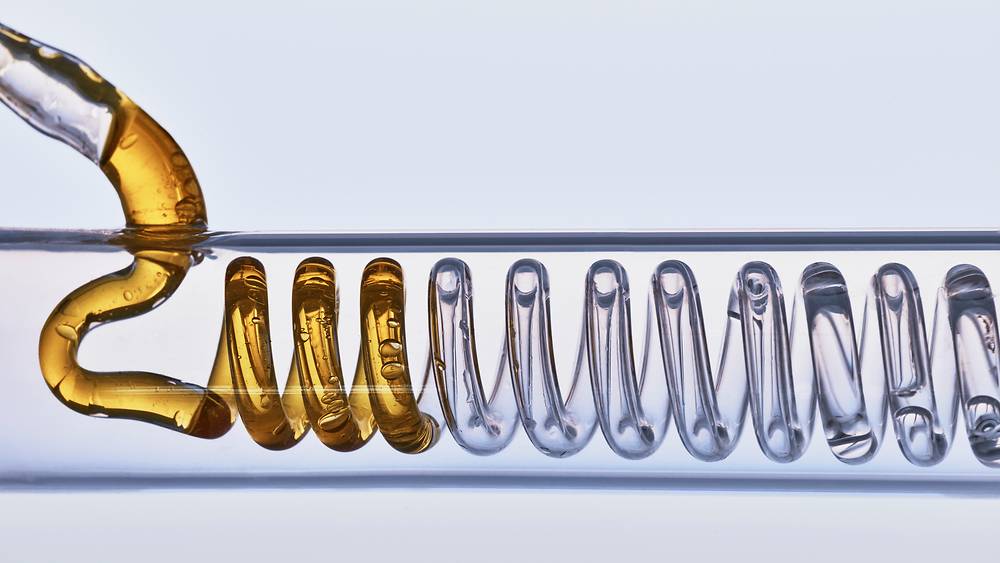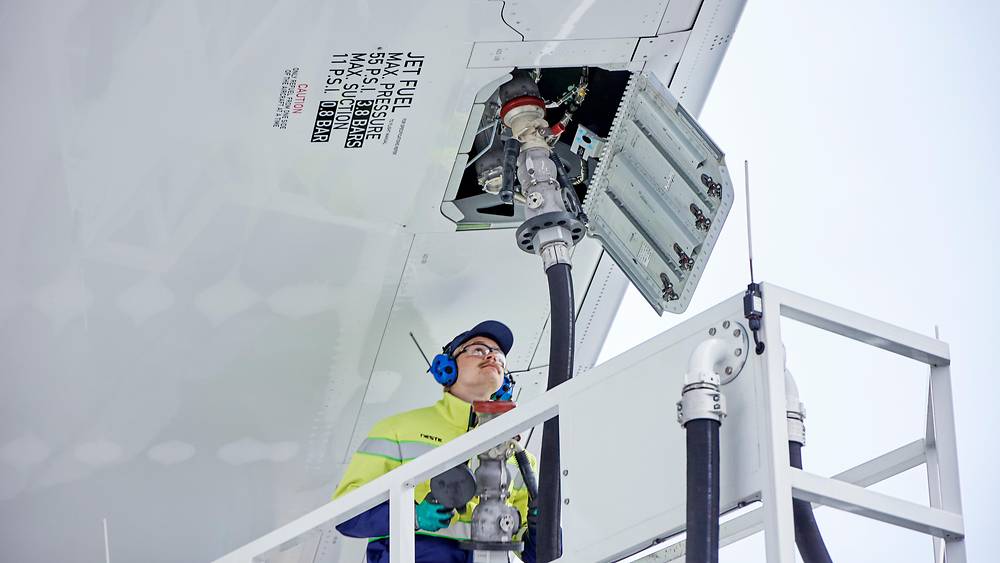Sustainable aviation fuel (SAF)


Sustainable aviation fuel (SAF) is a safe, certified and renewable alternative that we can use today to reduce the climate impact of air cargo transport. Scaling up the usage and production of SAF is a common goal for all of us who want to help reduce air transport’s dependency on fossil fuels.
Instead of crude oil, SAF is currently made of waste and residues, such as used cooking oil and animal fat waste. Because of this crucial difference, SAF can reduce greenhouse gas (GHG) emissions by up to 80% over the fuel’s life cycle compared to using fossil jet fuel.
- When combusted, SAF and fossil-based jet fuel emit roughly the same amount of greenhouse gas (GHG) emissions. However, during the production process, SAF produces significantly less GHG emissions than jet fuel, thus resulting in less emissions during the fuel’s life cycle.
- Whereas fossil fuels add to the overall level of CO2 by emitting carbon that had been previously locked away, SAF recycles the CO2 which has been absorbed by the biomass used in the feedstock during the course of its life.
- The exact reduction SAF can achieve depends on the feedstock and production pathway used. Biofuels that comply with the EU regulation require at least 70% CO2 emissions reduction.
How much SAF does Finnair use
Usage of SAF in the coming years
The share of SAF on our flights will increase through regulatory mandates and our voluntary actions in the coming years. For example, beginning in 2025, the jet fuel that Finnair and other airlines refuel at major EU airports must contain at least 2% SAF. That percentage will increase gradually each year, with mandates including 6% by 2030, 20% by 2035, and eventually 70% by 2050.
To meet our climate targets, we need to use SAF beyond what is required by law. However, the progress will not be rapid or linear.
In 2025, we aim to increase our voluntary SAF purchases by 50% compared to 2024. Voluntary SAF comes on top of the regulatory-mandated SAF amounts. By 2030, together with the oneworld alliance, we are aiming for a 10% level in SAF uptake.
Using more SAF is a joint effort
To reach our SAF objectives, we are partnering with businesses that fly with us for business or cargo transport. We invite you, too, to join these efforts by opting to make a SAF contribution as we believe all steps are important to drive forward the use and production of SAF.
Benefit for cargo customers contributing for SAF purchases
Are you interested in reducing shipment emissions? By contributing for SAF purchases for Finnair flights, you receive a scope 3 GHG emissions reduction certificate to be used in your own reporting.
According to the Greenhouse gas (GHG) Protocol emissions from cargo shipping are part of the so-called scope 3 emissions.
Co-funding the SAF premium with Finnair, companies receive a verified certificate and can use it in their own reporting to reduce their Scope 3 emissions accordingly.
Please note that if you have a certain reduction percentage in mind, we can calculate the contribution required to match your target.
SAF certificates prove the chain of custody based on the Book&Claim principle
Emissions reduction certificates, verified by a 3rd party, include the following information:
- SAF producer and supplier
- SAF production technology
- Feedstock
- SAF Volume
- GHG emission reduction
- Date of delivery and
- Reference to the validation of the sustainability attributes
How you can contribute for SAF


You too can help reduce air transport’s dependency on fossil fuels. As a cargo customer, you have the possibility to contribute for SAF and the amount of the contribution can be determined depending on your reduction target. Please contact us to discuss more by clicking the “Take action” link below and booking a meeting with us.
We can review the carbon emissions associated with your shipments and you can then determine your contribution to sustainable aviation fuel.
- Your full contribution is invested in SAF that comes on top of all the other SAF we buy ourselves.
- The SAF bought with customer contributions meets the criteria of the Refuel EU Aviation regulation. This means that the SAF will be biofuels produced from certain feedstocks, such as used cooking oil and animal fat, that meet the sustainability and GHG emissions criteria set by the EU.
- Your contribution increases the share of SAF in Finnair’s total fuel consumption and does not directly increase the amount of SAF used on your specific flight.
- SAF is not physically transported and fuelled to a specific aircraft or a flight. Instead, the SAF is blended with conventional jet fuel and piped into an airport’s shared fuel system. It can be then purchased and used according to a book and claim principle, a similar system that is used for the green electricity market.
Sustainability criteria for SAF
SAF can be produced from various sources with different technologies. Currently, the majority of SAF produced globally is biofuels made from used cooking oil and animal fat waste, but several other production pathways and raw materials have been approved for use in producing SAF in the future.
Finnair only buys SAF that is produced from raw materials that do not compete with food production or affect biodiversity. All our sustainable aviation fuel meets the sustainability and emissions-saving criteria of the EU’s Renewable Energy Directive (RED) or CORSIA. For example, biofuels that comply with EU regulations require a reduction of at least 70% of CO2 emissions.